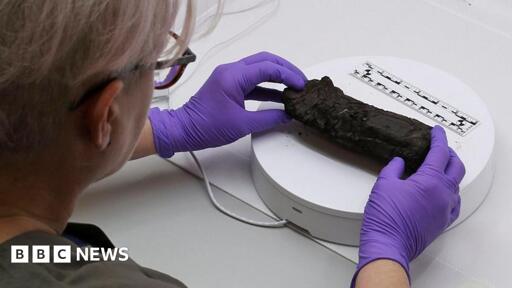- cross-posted to:
- [email protected]
- science
- cross-posted to:
- [email protected]
- science
It’s a 10m papyrus scroll from Herculaneum, one of the cities buried by Vesuvius’ volcanic ash in 79 CE. It’s fully carbonised but they’re using a synchrotron to create a 3D model of the scroll without damaging it. Then they’re using AI (pattern recognition AI, perhaps?) to detect signs of ink, so they can reconstruct the text itself.
The project lead Stephen Parson claims that they’re confident that they “will be able to read pretty much the whole scroll in its entirety”. And so far it seems to be a work of philosophy.



My position has always been that AI is useful given these conditions:
This is a genuinely good application of AI: